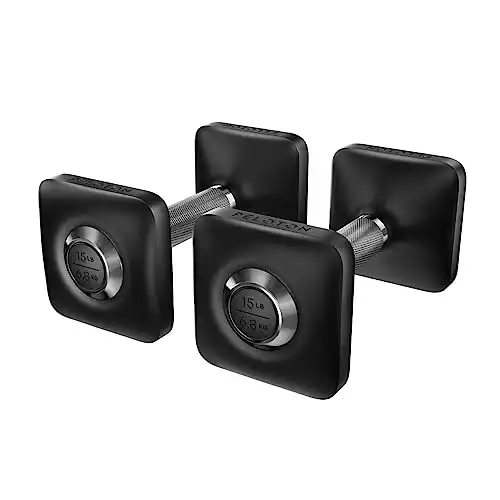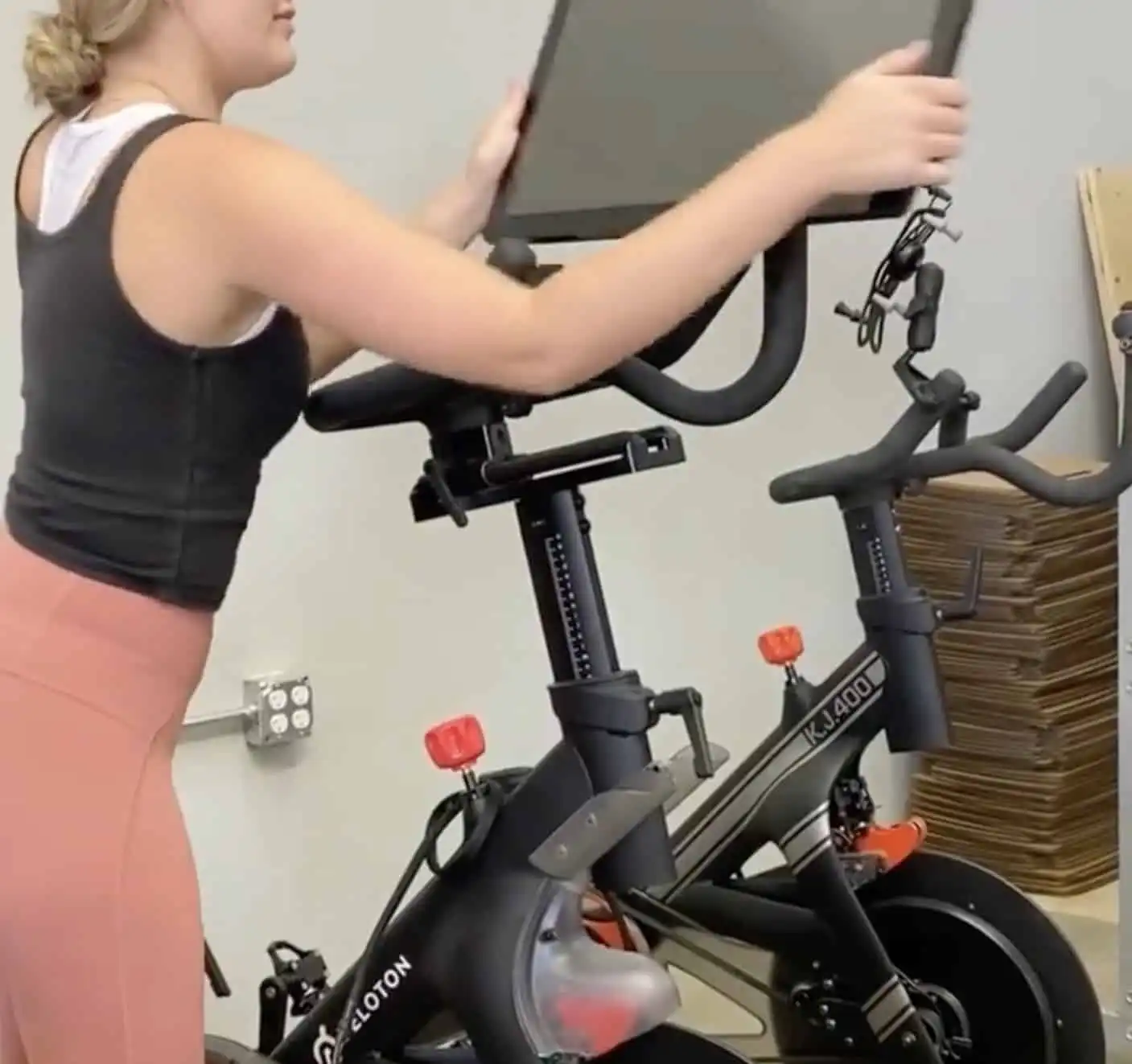Review of Peloton Bootcamp Classes: All You Need to Know
I have to be honest: for the longest time I was afraid of taking Peloton bootcamp classes. Just the name “bootcamp” scared me.
It made me think of the CrossFit classes I’d seen people posting about on Facebook, and that just wasn’t my jam. However, with so many bootcamp classes to choose from now on the Peloton platform, I needed get over myself and try them out.
Boy, am I glad I did. Let me tell you why I love the Peloton bootcamp classes and why I think you’ll love them, too. Also, you may just earn a special Peloton badge for taking one.
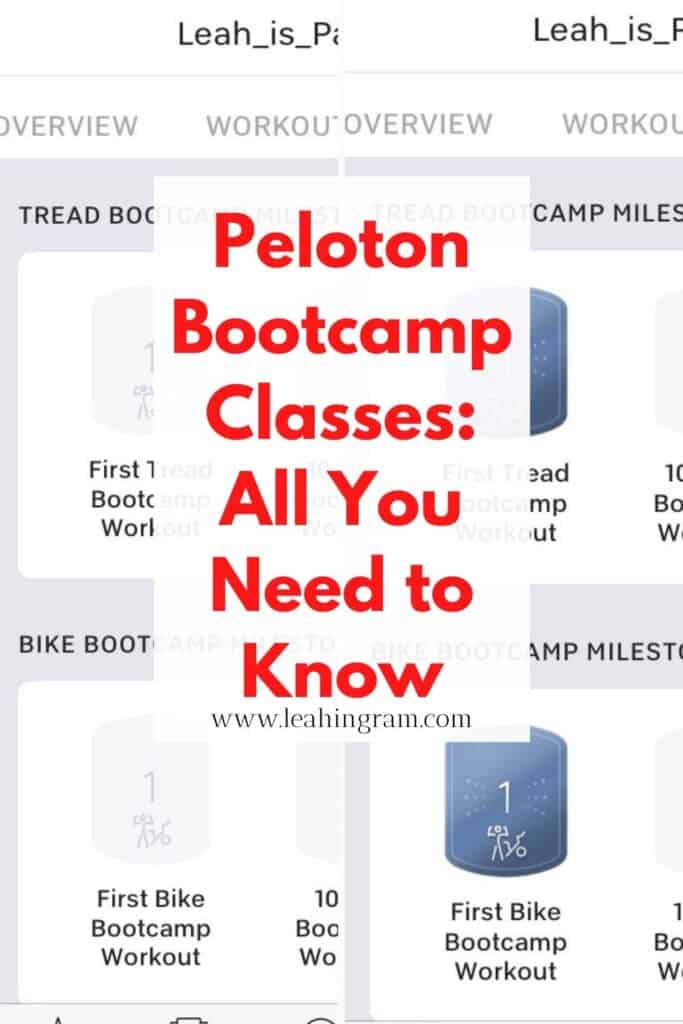
Different kinds of Peloton bootcamp classes
Since 2022, when Peloton introduced the rower, it has expanded the different kinds of bootcamp classes you can take. Here are your options today.
- Tread bootcamp
- Bike bootcamp
- Row bootcamp
- Floor bootcamp
Also, you can do any of these without own Peloton equipment. For example, I’ve taken hiking bootcamps with Rebecca Kennedy, and I don’t own the Tread. Instead, I used my good-old NordicTrack treadmill, which costs under $800 and has lasted me for years.
My daughters, on the other hand, own Concept 2 rowers. Before the Peloton Row content was released on the app, they would do Tread bootcamps on their rower. The parts when you’re supposed to run? They would row fast. Now, they can use their rowers to do legit Peloton rowing classes as well as Row bootcamp classes.
What are Peloton Tread bootcamp classes
At their most basic, a Peloton Tread bootcamp class combines cardio and strength. You complete the cardio portion on a Tread or treadmill of your choice, such as my aforementioned NordicTrack treadmill or my daughters’ hack for using a rowing machine.
Then, you complete the strength portion on the floor, off the Tread. In longer Tread bootcamp classes, you can expect to go back and forth between cardio and strength multiple times.
You can filter these bootcamp classes by area of the body you’ll target during the strength portion. Some are full body, some are lower body, others are core, etc.
Save this article and we’ll send it to your inbox. Plus, we’ll send you more great links each week.
Expect the instructors to throw in an EMOM or AMRAP during the strength part of class. What do these acronyms stand for?
- EMOM: Every minute on the minute
- AMRAP: As many reps as possible
Finally, Tread bootcamps can involve running, walking or hiking. And trust me: the hiking feels legit like hiking outside. Have you ever walked on a treadmill at 12% incline? It’s no joke!
Who teaches Peloton Tread bootcamp classes
Many of the instructors that teach running or walking classes teach bootcamp classes on the Tread. This is true of instructos in both New York and London.
The one exception is the hiking bootcamp classes. Right now, Rebecca Kennedy teaches them exclusively.
For the rest of the Tread bootcamp classes — and assuming no Peloton class purges in the near future — you can find bootcamp classes to take with these instructors:
- Callie Gullickson
- Rebecca Kennedy
- Joslyn Thompson Rule
- Selena Samuela
- Andy Speer
- Adrian Williams
As of right now, there are two two-for-one Tread bootcamp classes, exclusively with London instructors. They are Joslyn Thompson Rule and Hannah Frankson (now a bike and Tread instructor), and Assal Arian and Mayla Wedekind. The later duo offer the only Tread bootcamp class in German.
Finally, one category of Tread bootcamps is the HIIT or high-intensity interval training bootcamps. Andy Speers teaches these exclusively. Search “HIIT bootcamp” to find them.
What are Peloton Bike bootcamp classes
Like the Peloton Tread bootcamp classes, a Peloton Bike bootcamp class combines cardio of a cycling class with strength training off the bike and on the floor. I’ve found that the cardio portions combine lots of intervals that really get your heart rate up.
In fact, if you’ve ever taken an intervals, HIIT (that’s high intensity interval training) or Tabata class on the bike, then that’s what you can expect with the bike bootcamp classes.
You can do a bike bootcamp using an original Peloton bike or the Bike Plus. Or you can use another kind of spin bike plus the Peloton app.
However, if you’re doing the bootcamp on Peloton hardware, it is easier doing the bike bootcamps on the Plus would be easier. Why? Because you can swivel the screen to see the strength part easier.
However, ever since I learned to cast my original Peloton bike to my TV, I haven’t had to work about a swiveling screen or not. Because I can see the classes on my TV during the strength portion. The only challenge with this setup? The sync is often off.
Like the other bootcamp classes, on the bike you’re doing the cardio portion of the workout. And then you’re doing the strength portion on the floor.
Again, you can filter these bootcamp classes by area of the body you’ll target during the strength portion. Some are full body, some are lower body, others are core, etc.
What do you do about shoes
I know that lots of people have been hesitant to do the Peloton Bike bootcamps because of the whole needing to change your shoes thing. They’re worried about that transition period and if they’ll have enough time. I’m here to tell you that there is no need to worry.
The instructors have built in enought time for you to take off your cycling shoes and change into sneakers and then back again when you go back onto the bike. This screenshot from a Cody Rigsby bike bootcamp shows him changing shoes.
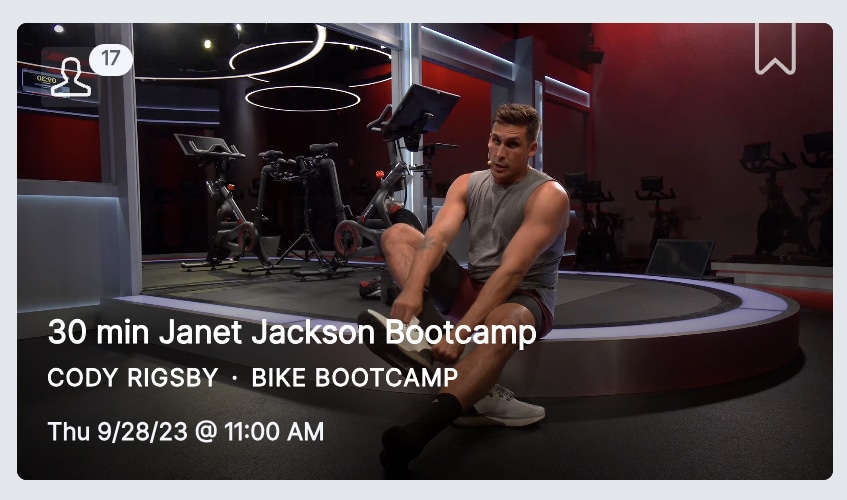
In some bike bootcamp classes, I’ve had enough time to transition from the bike to the floor, plus change my shoes and sneak in a bathroom break.
If you don’t like the idea of having to get on and off your bike, changing your shoes each time, here’s a pro tip: the best bike bootcamps for you to take would be the shorter ones.
That would be 30-minute bike bootcamps, of which there are plenty. You’re only getting off the bike once.
Who teaches bike bootcamp classes
What’s interesting about the folks teaching the bike bootcamp classes is not all of them are bike instructors. I was really surprised to find out that Tread instructor Jess Sims and strength instructor Callie Gullickson are both teaching bike bootcamps. Callie teaches the Tread bootcamps, too.
Here’s a full list of who is teaching Peloton bike bootcamps as of this writing:
- Cliff Dwenger (classes are in German)
- Callie Gullickson
- Tunde Oyeneyin
- Cody Rigsby
- Jess Sims
Peloton Row bootcamp classes
The Peloton rowing bootcamp classes are just like the bootcamp on the other Peloton equipment. And just like the other bootcamp classes, a handful of instructors teaching in that discipline are the ones teaching the classes.
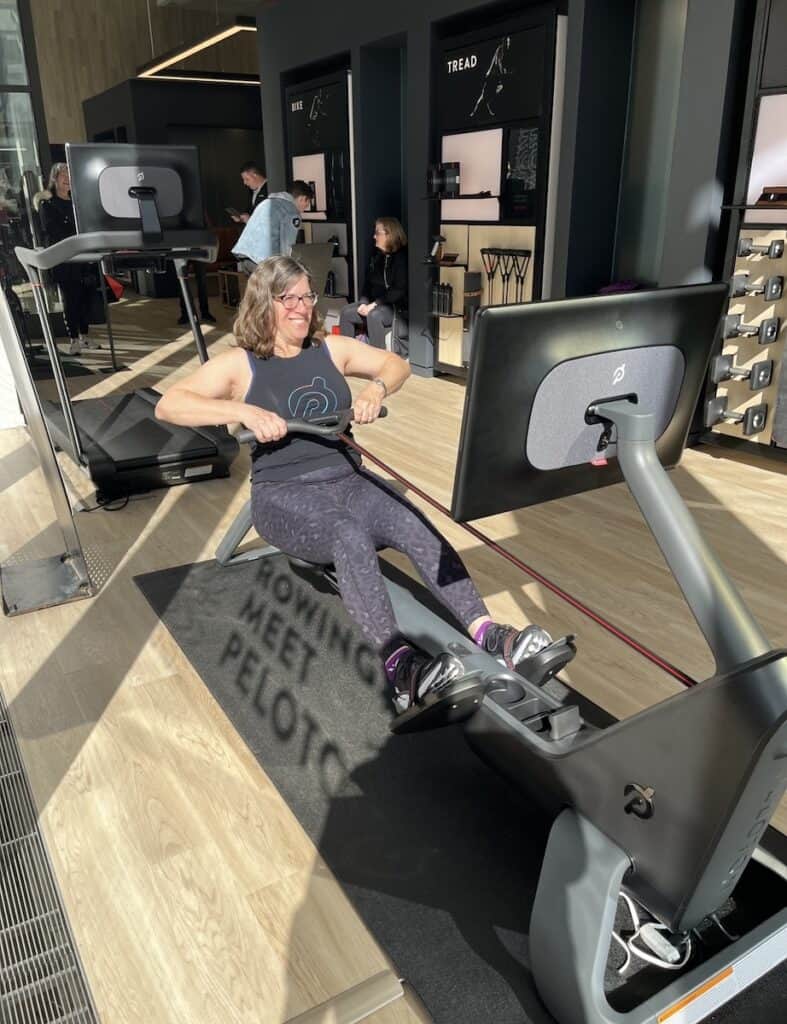
With the rower, only Adrian Williams and Katie Wang are currently leading Row bootcamp classes.
Finally, since the Peloton Row has a swivel screen like the Bike Plus, that makes the strength part of bootcamp class much easier.
What are Floor Bootcamp classes
You won’t find any floor bootcamp classes by searching on Peloton. Instead, you need to visit the Peloton Programs tab.
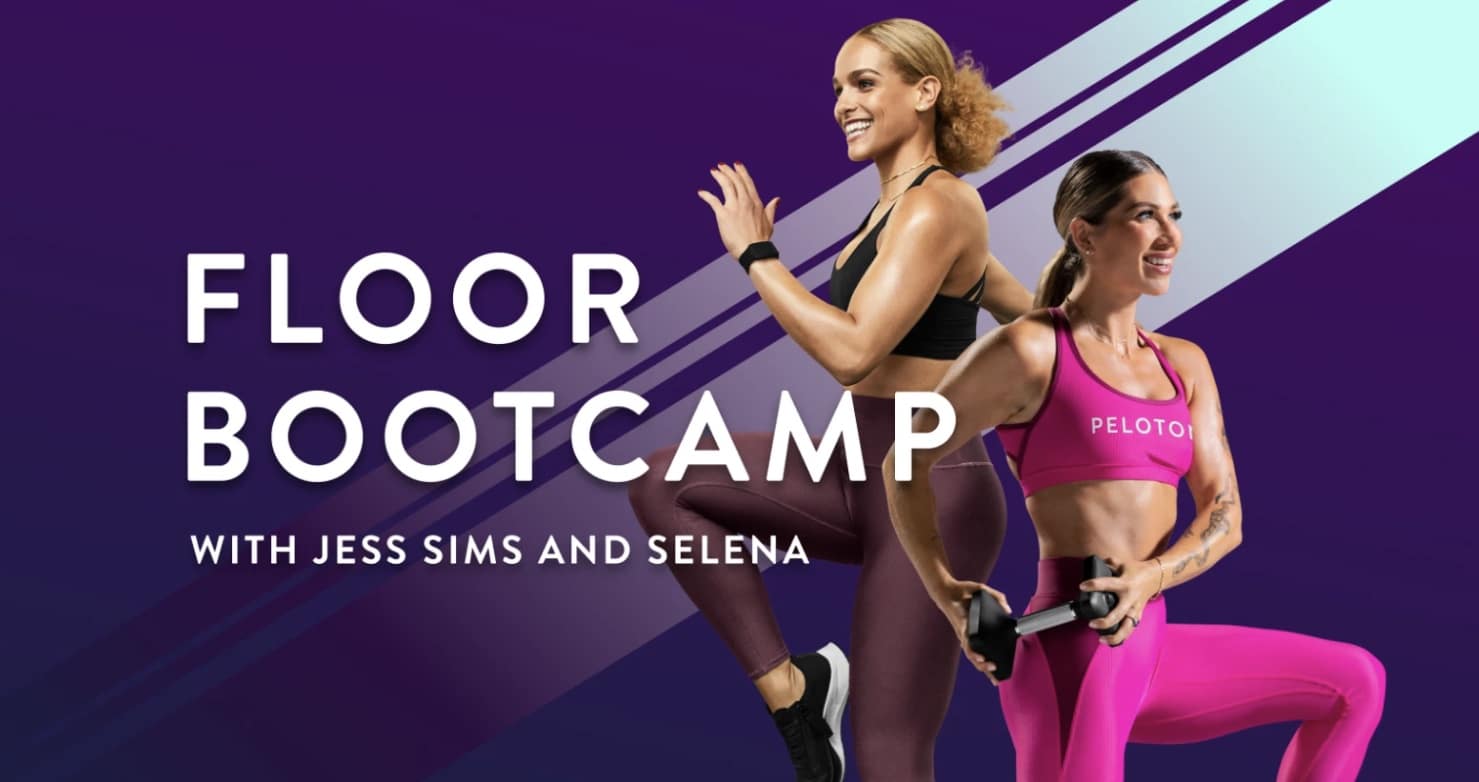
Here is how Peloton describes the Floor Bootcamp program:
“Take your strength and cardio to the next level with Jess & Selena’s Floor Bootcamp! This four-week Peloton Guide program is designed to make you stronger and increase your aerobic endurance while HAVING FUN!”
So, in other words, this program was created exclusively for Peloton Guide owners. However, now it’s available to everyone.
Benefits of previewing bootcamp class plan
When you preview a bootcamp class, you can see the class plan in that preview. This will help you figure out how many times you’ll be getting on and off the bike, treadmill or rower onto the floor.
Think of it as the bootcamp class schedule so you can plan ahead. In addition, by previewing the class plan, you’ll also have a sense of how many minutes you’ll spend in each portion of the class.
For example, a 45-minute Jess Sims 90s bike bootcamp has about 20 minutes of cycling and about the same amount of time doing a full body strength workout.
The rest of the time is spent warming up, cooling down, and transitioning from bike to floor (changing your shoes) and back again.
With the Rebecca Kennedy hiking bootcamp classes, here’s a sample of plan for a 45-minute hiking bootcamp.
- 3 minute warm up
- 7 minute walking
- 11 minute full body (strength)
- 12 minute walking
- 12 minute full body (strength)
Where do you find these Peloton bootcamp classes
You can access all of the bootcamps from the Peloton app as well as on the Peloton website. In addition, you’ll find bootcamp classes connected to the Peloton hardware you’re using (Tread, bike or Row) on that equipment, too.
I’m saying like this to explain this nuance. You cannot do a Tread bootcamp class from a bike, or a bike bootcamp class from the Row. However, if you use the app, Peloton website or the Peloton channel on your Roku TV, then you can access all of the bootcamp classes. Does that make sense?
Can you take bootcamp classes live and in person?
When booking a class at the NYC Peloton studio, occasionally there will be bootcamp classes that you can take live with the instructors. Right now, it is the Tread bootcamp classes only. This includes Adrian Williams “Thunder” classes.
Are Peloton bootcamp classes good?
After my first classes, this is how I felt.
Honestly? What had I been waiting for? I loved them.
The classes were so good! And efficient. If you’re trying to balance cardio and strength in your workouts, these bootcamp classes get both done in one session. I love that.
Bootcamp badges
You may be wondering if a Peloton bike bootcamp counts as a ride or if a Peloton Tread bootcamp counts as a run or a Row Bootcamp counts for rowing classes.
No, they don’t. When looking in your profile, under Achievements, you’ll see that bootcamps have their own milestones.
And within that, there are separate lines for Tread Bootcamp Milestones, Bike Bootcamp Milestones and Peloton Row Bootcamp milestones.
So, you can see from the image below that I’ve yet to do a Peloton Row Bootcamp. I’ll get there, I swear.
On the other hand, I’ve done a handful of bike and Tread bootcamps.
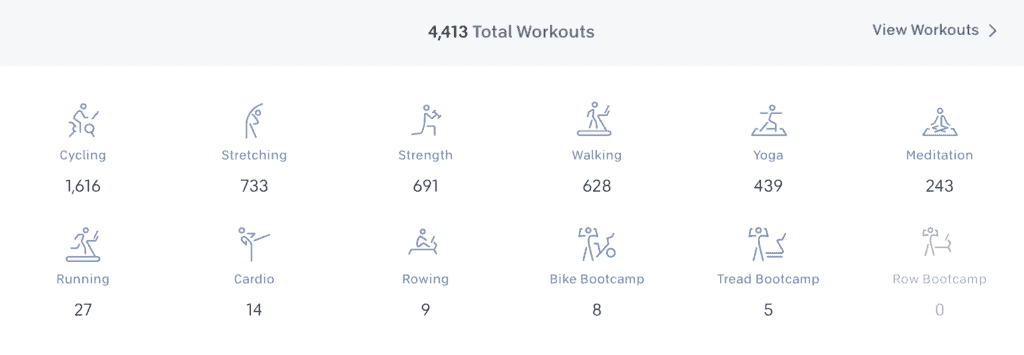
Equipment you need for bootcamp classes
In my blog post on the best weights for Peloton, I’d mentioned Peloton bootcamp weights. Truth is, if you’re already doing strength classes, you probably have everything you need for class.
What are Peloton bootcamp weights
Like in the strength classes, instructors will suggest you have one or more of the following kinds of dumbbells:
- light
- medium
- heavy
I’ve yet to hear an instructor qualify what weight a dumbbell would be to count as light, medium of heavy.
Here is what I learned, though, with my first bike bootcamp classes: you definitely need something heavier than the one, two or three-pound weights on the back of your bike.
So, for me, here is how I organized my Peloton bootcamp weights.
My light weights are five pounds, my medium weights are eight pounds, and my heavy weights are 10 pounds. I imagine as I do this more and I get stronger that will change.
I’ve already invested in 12 pound and 15 pound weights to add to my Peloton bootcamp weights set.
Mats and sneakers for bootcamp classes
In addition to bootcamp weights, you also want to have a mat nearby. Because a lot of the strength work involves being on the floor.
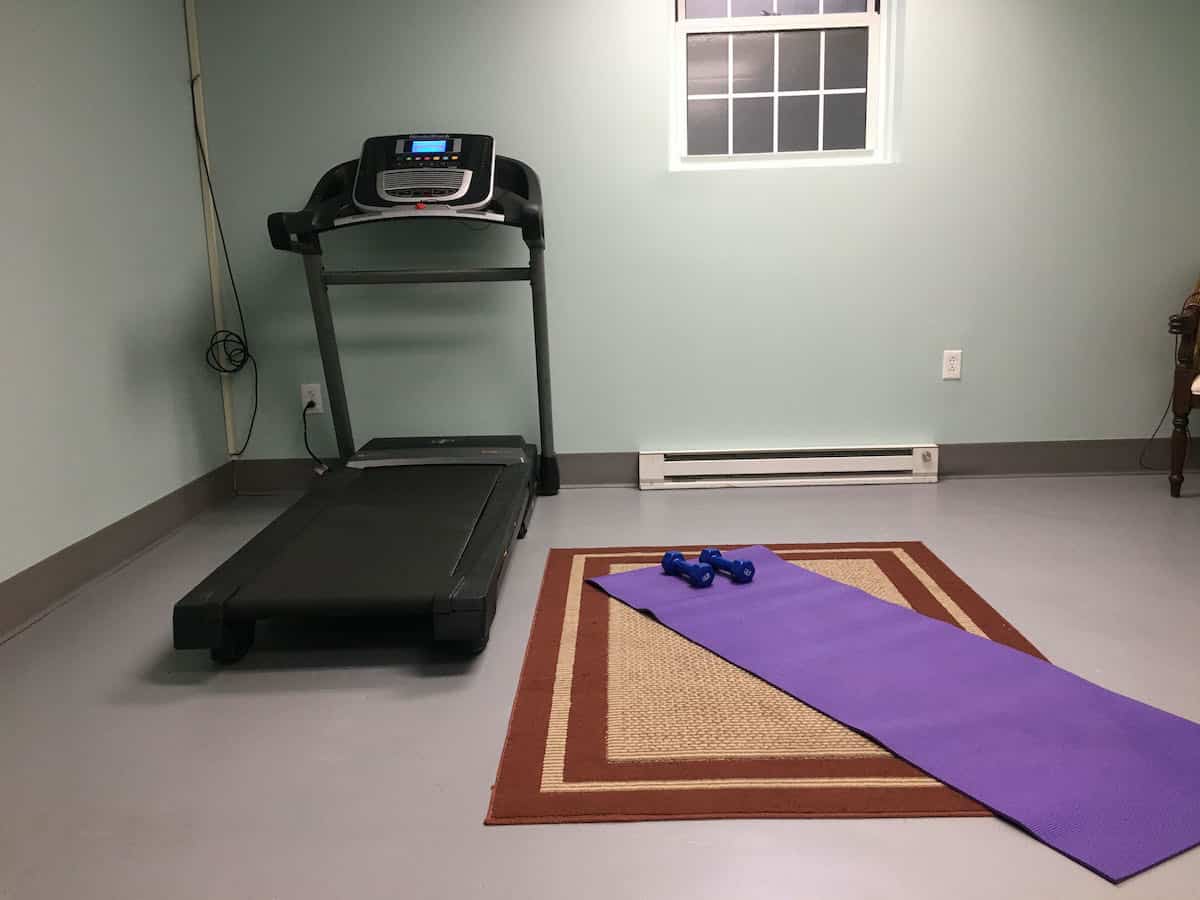
You may also want a rolled up towel if you have sensitive knees. In both my Tread and bike bootcamp classes, we were on our hands and knees for a bit. Having the extra padding of the towel helped. Or, you can double up your yoga mats for extra cushioning.
Finally, you need a good pair of sneakers. Obviously, you’ll already be wearing running shoes or tennis shoes or whatever you call sneakers where you live when doing a Tread bootcamp class.
However, with the bike bootcamps, like I said, the instructors will give you time to get off the bike and change your shoes. However, if you’re riding your stationery cycle with toe cages and sneakers, you’re all set.
Need wide width shoes for working out? This article can help.
Peloton bootcamp class categories
Whether on the Tread or bike or Row, Peloton bootcamp classes fall into different categories. These categories usually involve difficulty of the class and length of the class.
Also, classes focus on different parts of your body. Plus, there are classes that use weights that you hold and classes that rely on just your bodyweight.
In these bodyweight classes, you can expect to do exercises like planks, push-ups and squats.
Length of classes
Most bootcamp classes come in these lengths.
- 10 minutes (warm up)
- 20 minutes
- 30 minutes
- 45 minutes
- 60 minutes
Body focus of classes
Obviously, each Peloton bootcamp class includes some sort of cardio. It could be as short as 10 minutes or much longer than that. Some feature one session of cardio; others have two.
All include strength training, but, as I mentioned, the body parts you focus on can differ. The strength classifications you can expect to see are:
- full body
- lower body
- body weight (no handheld weights needed)
- upper body
Some of the upper body classes might be specific to a body part or parts, like shoulder and back, or shoulder and arms.
Some of the lower body classes might target a specific area, such as glutes.
Class difficulty
Are Peloton bootcamp classes hard? Well, it depends on a few things.
First, what is the class difficulty you’ve chosen? Next, how long is that class?
Classes are usually categorized like many other Peloton classes:
- beginner
- intermediate
- advanced
Also, are you new to strength training and cardio? Or have you been riding, running or rowing for awhile?
If it’s the former, yes, the bootcamp classes will be hard. But good hard.
If it’s the latter, I would still recommend starting out with beginner classes and working your way up.
Bootcamp classes without the Bike Plus
One of the standout features of the Bike Plus is the swivel screen. It makes it so much easier to take your workout off the bike.
Obviously, with the bike bootcamp classes, it’s easier not to have to crane your neck to see what the instructor is doing in the floor portion of class. As I said, with my OG Peloton bike, I’ll cast to my Roku TV so I can see what I’m doing.
However, if you have an OG bike, you have another option: investing in an aftermarket product that swivels your screen for you. The folks who make the SpinTray, which turns my Peloton into an exercise desk, created something called The Pivot.
The Pivot lets you swivel your Peloton screen. The Pivot is from Top Form Design or TFD. It’s made exclusively to be used on your Peloton.
Use code LEAH10 at checkout to save 10%.
The Pivot changes the arm that holds your table or touchscreen so it can turn to the side.
It’s easy to install, doesn’t cost a lot of money, and basically turns your original Peloton into a Bike Plus–at least screenwise!
The Top Form Design Pivot aftermarket product is an affordable option to make your original Peloton bike screen swivel. Use coupon code LEAH10 at checkout to save 10%.
Overall thoughts on Peloton bootcamp classes
If you’ve never tried Peloton bootcamp classes, don’t be a chicken like I was. In fact, I’m mad at myself that it took me this long to try them out. They are fun, they are efficient and after each class, I feel great.
If you have any thoughts about your own experience with or questions about bootcamp classes, please post a comment to let me know.

